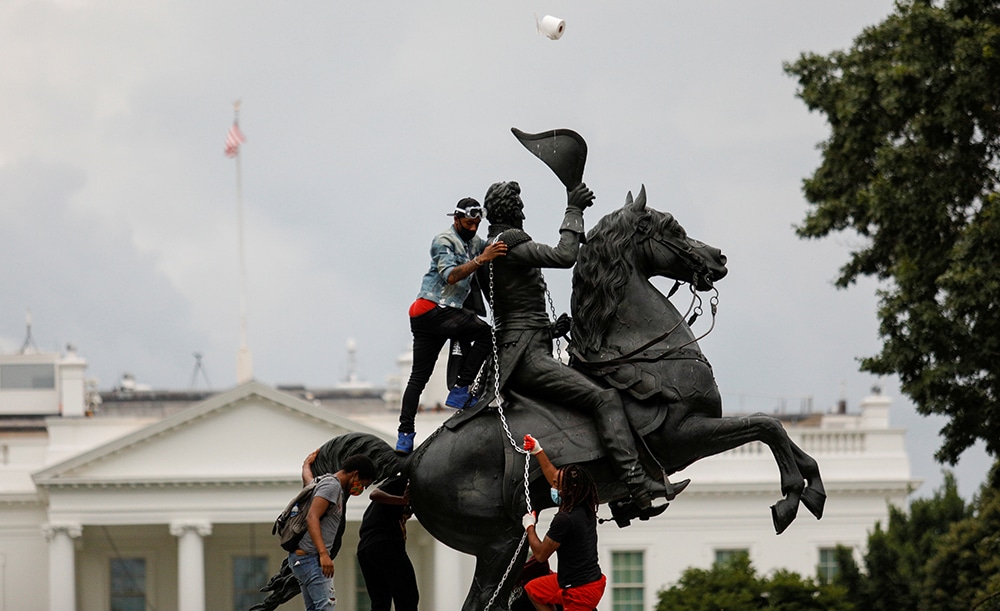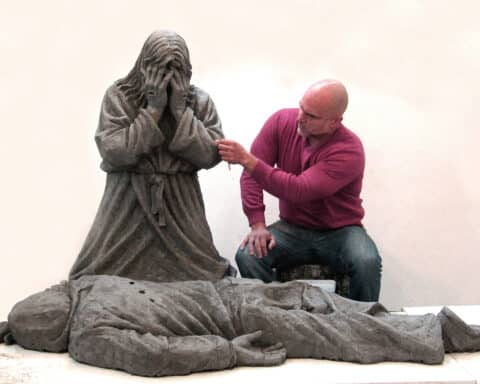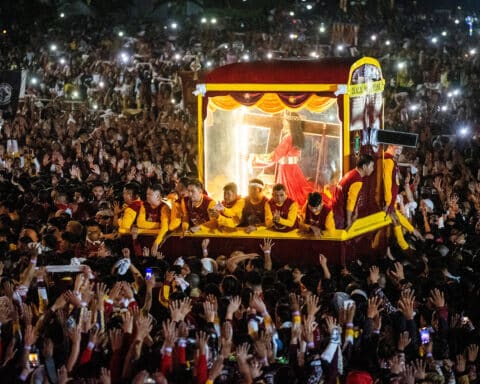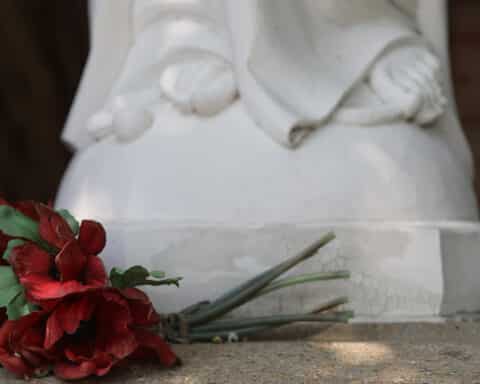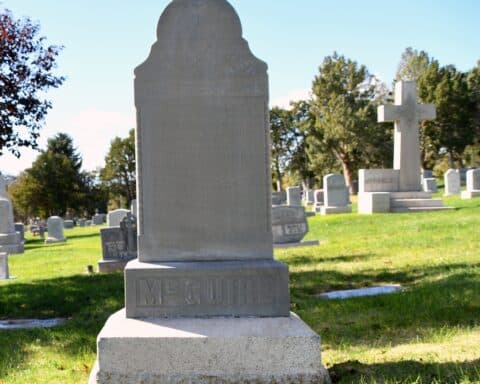Over the last few weeks, the statues have started to come down — Confederate generals, Thomas Jefferson, Christopher Columbus (who is embraced by many Catholics as an American hero who shared their faith). Even saints are not immune, as statues of Junipero Serra have fallen by the wayside, too.
What are we to make of all this, as Americans and Catholics? For some, destruction or removal is justice — long delayed but now arrived. Others profess sympathy for the goals of the removers but question the appropriateness of their methods, depicting statute destruction as mob violence. This concern with group size seems overstated; “mobs” can act for justice as well as individuals, and often action is better than more discussion. Remember the famous story of American revolutionaries pulling down the statue of George III and melting it into musket balls? I’m glad that statue was pulled down.
For many of us, however, the question is more complicated. As Catholics, we can and must support racial justice. But for many, the destruction of statues and monuments is cause for concern nevertheless. Many express a fear that we will lose something precious if we lose the ability to commemorate Americans of the past (or, perhaps even more alarming for Catholics, saints); we will lose a part of our heritage, our national story, our most powerful moral examples. This is perhaps the best argument in favor of leaving statues alone: They provide an opportunity for moral reflection — an opportunity to reflect on who we are, in ways both good and bad.
But I think we ought to ask ourselves the same question that first-year history students at The Catholic University of America soon learn to grow sick of hearing from me: “Who’s we?” In my classes, students are not allowed to use the word “we” in reference to Americans (or Catholics) of the past. Statements like “we fought the British in 1775” are verboten; offending paper writers find the margins of their essays full of my scrawled questions: “Who is we? Were you there?”
The rule exists, however, not as an opportunity for me to exercise my wit, but because the word “history” can mean two different things. In English “history” can simply mean “the past,” the content of history, and individuals’ and communities’ sense of continuity with it. It can also mean the critical discipline of history, a set of intellectual practices that help us recognize when the stories we tell about the past are misleading — and in ways that tell us a lot not only about the past but the present as well.
When students use the word “we,” they immediately close up the critical distance they need to do this second kind of history. Hidden inside every “we” are the assumptions that my students and I want to investigate rather than take for granted. “We fought the British in 1775” might make sense to many of the students in my classrooms; given the demographics of the student body at CUA, many of them are white students from states in the mid-Atlantic that were involved in the Revolutionary War. But, I tell them, many enslaved black people supported the British, who offered to free them if they fought the colonists who had enslaved them. What would it mean for the black students in the room, then, to think, say or write that “we” fought the British? That “we” fought for freedom? For that matter, what does it mean for the many white students in the room to say or think that “we” permitted slavery to continue in the United States? When they learn the habit of distancing themselves from imagined communities, students begin to see that they do not necessarily want to be included in the “we” of the past. And that is indeed why critical engagement with the past — the discipline of history — is worthwhile not merely as an intellectual but as a moral exercise. When we eschew the cheap “we,” it allows us to think of different ways of building community.
What does this have to do with statues? Well, the short answer is that monuments and statues are we-makers. They tell — often in very simple terms — stories about who “we” are. Scratch a monument and you find a whole pile of assumed truths about the past. For many, statues tell Americans that their virtues are better and more important than their vices, or that the American story is one of consensus (so long as the people hurt in the process are left out). Sometimes they say the good things a person does are more important than the bad (racist) ones. None of these statements are necessarily untrue. The problem is that they demand complex, careful and morally accountable consideration — history in the second sense — and they are not likely to get it in statue form. Looming in our public spaces, statues assert that the question of who “we” are has already been asked and answered, and the campaign to destroy or remove them loudly raises that question again. Honestly asking and answering who “we” are provides a new set of answers in a way that can stimulate a more profound — both moral and intellectual — connection to the past.
As Catholics, we should celebrate them for that reason. And we should do so in the confidence that confronting the True leads us, ultimately, to the Good; they are the same, after all. And we should do so knowing that belonging to a tradition, to the past, is good — even as looking critically at that connection is also good. As Chesterton argued that Catholicism is not a religion afraid of accepting two paradoxical truths. If a sense of “our” heritage is often in tension with a moral responsibility to the past and to the people who might be hurt by “our” stories about it, that is no surprise. For now, let us choose justice toward those hurt by the “we” embodied in these statues. As the Body of Christ, we are connected to each other — in the present and the past — by better things.
Samuel Fisher is a professor of history at The Catholic University of America. He writes from Maryland.

